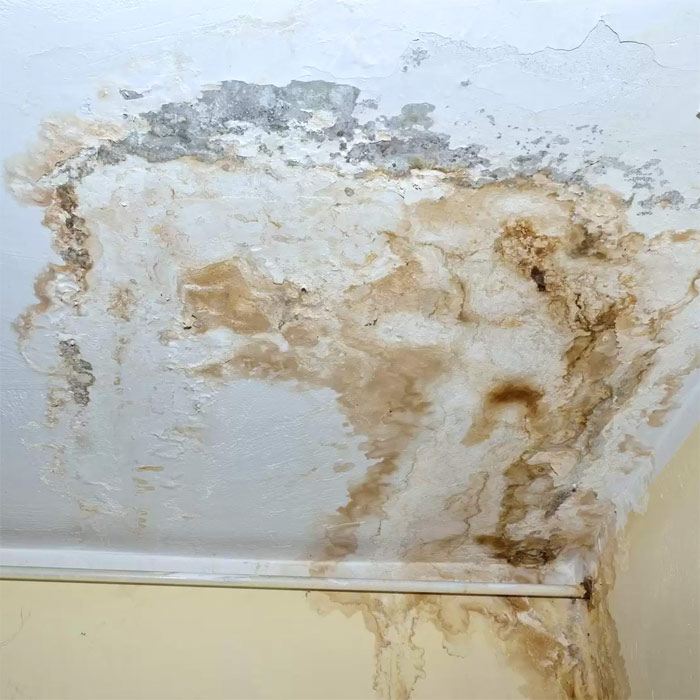
Plumbing leaks may seem like a nuisance at first, but left unaddressed, they can spiral into expensive issues down the road. From utility bill spikes to destroyed floors and mold growth, leaky pipes and fittings can devastate a home and budget. Being proactive in detecting and repairing water leaks quickly is key to avoiding catastrophic damage.
In this blog, we'll explore the wide-ranging consequences that can stem from unresolved plumbing leaks. We'll overview how leak points form, what types of damage they create, associated health risks, and the importance of enlisting professional help sooner rather than later. Reviewing the potential outcomes of leaky plumbing will hopefully spur homeowners to take prompt action when problems arise. Catching and repairing issues in early stages minimizes the impacts.
Where Do Plumbing Leaks Originate?
Before examining leak consequences, let's briefly recap common sources. Leaks can form at any point in the plumbing system where water flows under pressure, including:
- Faucets and showerheads
- Supply lines and risers
- Pipe joints and fittings
- Toilet tanks and valves
- Water heater tanks and connections
- Drainage pipes and gaskets
- Outdoor hose bibs and irrigation systems
In most cases, leaks arise from worn washers, cracked fittings, separated joints, corroded pipes, or loose connections that need to be replaced or properly sealed. Faulty installation or materials can also cause water escape. As infrastructure ages and loosens, leakage risk grows. And in winter, pipes can freeze, expand, and burst. Any observed moisture or dripping around plumbing requires prompt attention to identify the origin and correct it. Unaddressed seepage worsens over time.
Consequences of Plumbing Leaks
Here are some of the consequences of plumbing leaks:
The most obvious and immediate impact of any plumbing leak is excessive water loss. Even minor drips can waste hundreds of gallons per month, sending your water bill skyrocketing. The exact consumption depends on leak severity and duration. Large ruptures or fast-flowing unseen leaks inside walls consume incredible amounts of water 24/7 until found and fixed. According to the EPA, household leaks account for nearly 1 trillion gallons of water waste every year nationally. Per household, the average leakage loss is 10,000 gallons annually. That's financial and resource waste you want to avoid. Catching and repairing drips early keeps water bills reasonable.
If left unrepaired, the water from plumbing leaks does not simply dissipate harmlessly. All that excess moisture seeping into walls, floors, cabinets, and other materials leads to pervasive structural damage and breeding grounds for mold. Drywall, wood, and flooring absorb water and deteriorate over time. Prolonged leakage erodes building materials and compromises structural integrity.
Damp conditions foster mold growth which spreads rapidly. Once mold takes hold, extensive remediation or even demolition may be needed to address the widely contaminated materials. The longer the leaks persist, the costlier the restoration work required. Depending on placement, size, and duration of leakage, you may be facing full room gutting or major renovations to repair the destruction. Tackling leaks immediately reduces how much the water infiltrates and simplifies repairs.
In addition to compromising the physical structure of a home itself, chronic moisture and mold create health hazards for occupants. Excess indoor dampness enables mold spores, bacteria, allergens, and other irritants to multiply. Studies show increased respiratory illness and infections in leak and mold-prone environments. Symptoms like chronic coughing, skin irritations, sinus congestion, and headache may indicate unhealthy indoor air quality. Children and seniors are particularly susceptible.
If you suspect plumbing leaks or high moisture are degrading air quality, consider testing for mold and consulting remediation specialists for cleanup. Address the root cause leaks to deprive mold of the dampness it needs to regrow. For extensive contamination, you may need plumbing repairs plus HVAC upgrades for moisture control. Preventing leaks in the first place avoids the diseases associated with chronically wet buildings. Don't ignore suspicious odors or symptoms.
Frozen Pipes and Metering Issues
In winter, minor drips from plumbing can turn into ice patches outside or on walls. These freezing leaks accelerate pipe damage. Water within pipes may fully freeze and expand during cold snaps, rupturing the lines. Once pipes thaw, immense leakage and floods occur. Likewise, if outdoor metering equipment leaks, freezing temperatures can incapacitate the metering instruments. Faulty readings result, often overbilling usage. Addressing any exterior plumbing leaks before sub-freezing weather allows you to avoid huge cold weather plumbing disasters.
The excess moisture from plumbing leaks follows gravity downward, soaking into floors and seeping along walls into lower level rooms. As a result, ground-level appliances are especially vulnerable. Water that pools under refrigerators, dishwashers, washing machines, dryers, and hot water heaters causes corrosion, electrical shorts, and mold inside the units. Preventing leakage is key to avoiding full appliance breakdown. For recently soaked appliances, have a technician inspect for proper and safe function after plumbing repairs finalize. You don't want compromised electrical components or hidden mold remaining inside everyday household machines.
Many newly constructed homes come with a 1-year builder's warranty covering defects like plumbing leakage. However, this coverage is contingent on homeowners properly maintaining the home and reporting any defects for repair. Unresolved moisture damage often voids warranty coverage since it implies improper upkeep allowed leaks to persist unchecked. Don't lose out on your warranty rights by neglecting obvious plumbing issues. Stay vigilant about drips and damp spots so warranty providers fix flaws while the coverage window remains open.
Plumbing Repairs Grow Costlier
It should be clear by now that dismissing plumbing seepage as trivial has expensive consequences. Yet deferring professional repairs only exacerbates issues further. Significant water damage usually requires full plumbing repairs plus electrical, HVAC, mold remediation, drywall, and flooring work. Items like cabinetry and furniture may need replacement. If structural integrity is impacted, major rebuilds follow.
The ultimate repair costs scale exponentially the longer leakage goes unchecked. Facilities managers estimate fixing issues promptly within the first 48 hours of water escape saves around 70% compared to waiting even a few weeks as harm intensifies. Don't compound damages based on the misconception leaks are contained or will go away. Any observed dripping requires prompt response. Water waste and destruction will only spread until underlying system issues are corrected.
We've covered the property damage and health implications of plumbing leaks at length. However, water problems can go beyond just building and health consequences. Gas lines or appliances intermixing with water create serious fire and electrocution hazards. If the leaking water itself contacts electrical wiring or components, shocking risks arise. Waterlogged ceilings threaten collapse, endangering occupants. Plumbing leaks near furnaces or boilers reduce fire safety. Address water leaks promptly to eliminate these life-threatening dangers hidden within your home systems.
How Plumbing Contractors Minimize Leak Risks
Now that we've reviewed the list of ways unfixed plumbing leaks create risks and costly issues down the road, let's discuss solutions. The most proactive approach is getting your plumbing system assessed regularly to identify and seal minor drips before major damage sets in. Licensed professional plumbing contractors have the skills and technology to inspect the full system and catch problems while affordable to fix.
Annual leak inspections allow plumbers to check pipes, fittings, valves, and fixtures for corrosion, cracks, and looseness. Thermal imaging finds hidden moisture in walls before it destroys. For new homes, a thorough inspection ensures installations were done properly without flaws that lead to future leakage. Technicians can also confirm proper pipe slope and ventilation to prevent blockages that cause bursts with pressure buildup. Taking a preventative maintenance approach minimizes the chances of leaks and avoids the consequences outlined here.
For homes with existing dampness or drips, plumbers determine the origin and remedy it using codes-compliant methods and materials that last. They open up walls safely to access and replace leaky pipes and fittings with minimal destruction to your home. With the right plumbing expertise, the problems are solved at the source so leaks no longer persist and spread havoc. Your home is restored to safely flowing, leak-free plumbing function. Don't wait until major renovations are needed – get ahead of leaks today.
Plumbing leaks that are dismissed as harmless nuisances frequently escalate into mold, high water bills, deteriorating home structures, health risks, and much costlier repairs. The moment you observe damp spots, odors, higher usage, or dripping pipes, take action by contacting professional plumbers to identify and permanently fix the root cause deficiencies. Leak repairs are far simpler and affordable when not left to intensify over weeks or months. Invest in preventative annual checkups and respond promptly to any signs of leakage to avoid pricey consequences down the road. Address problems early and rest assured knowing your plumbing will operate smoothly for decades to come.


